Afterthoughts – Michelin 3 star Kojyu 小十 in the Heart of Ginza
Every year we try to make a foodie trip to Tokyo, a city with such incredible cuisine and dedication to meticulous details, that it comes as no surprise as the home to the most Michelin 3 star awarded restaurants in the world. We’ve had some unforgettable meals in this impeccable city, and every trip we try to visit at least one Michelin 3 star establishment. For this trip, I decided to reserve the Michelin acclaimed Kojyu for our first dinner upon arrival, and the meal exceeded our expectations and set the benchmark for the best kaiseki meal we’ve had thus far. Every aspect of Kojyu was perfection, from the immaculate service to the exquisite cuisine.
We arrived in an inconspicuous building nestled in the heart of Ginza. When the elevator doors opened to the 4th floor, the space transformed into a zen-like haven, with the kind of light, natural elements aesthetics that Japanese design is so renowned for. We were escorted by a kimono-clad hostess through a maze of tatami rooms to our private dining room. Like most upscale Japanese restaurants, the dinner is presented in omakase fashion, meaning that the menu choice will be completely at the chef’s discretion. And at an average price of US$350 per person, let’s just say we did come with great expectations.
The beauty of a kaiseki meal is that the chef sources the freshest ingredients at their prime, so each component is the best of the best. It’s a delicate meal with intricate flavours, playing on complimentary and contrasting tastes, resulting in one harmonious narrative. Instead of overwhelming spices and sauces, the chef allows each ingredient to sparkle in its true essence, and manipulate each item like a hue on a painter’s palette to compose an ultimate masterpiece.
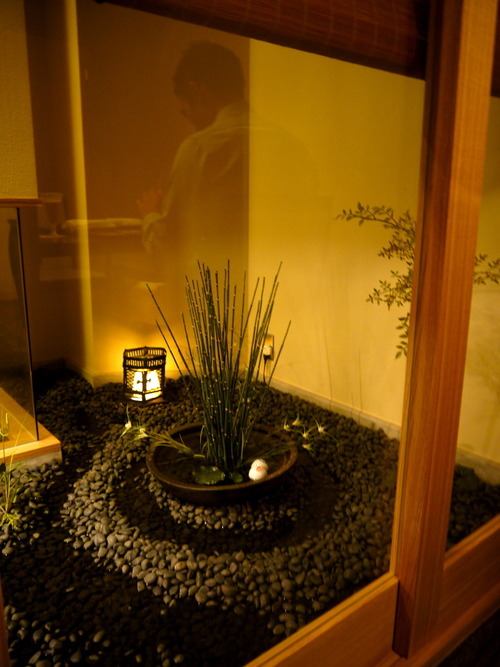
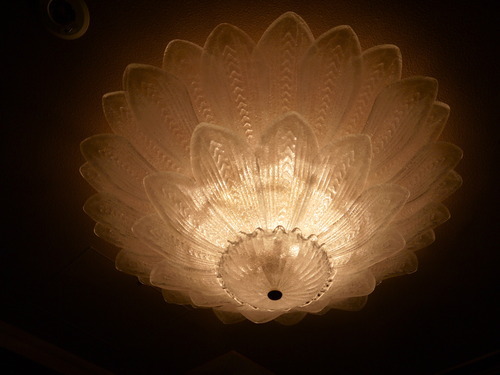
We opened our dinner with some refreshing enticements – beer for the Boy, champagne (of course!) for me.
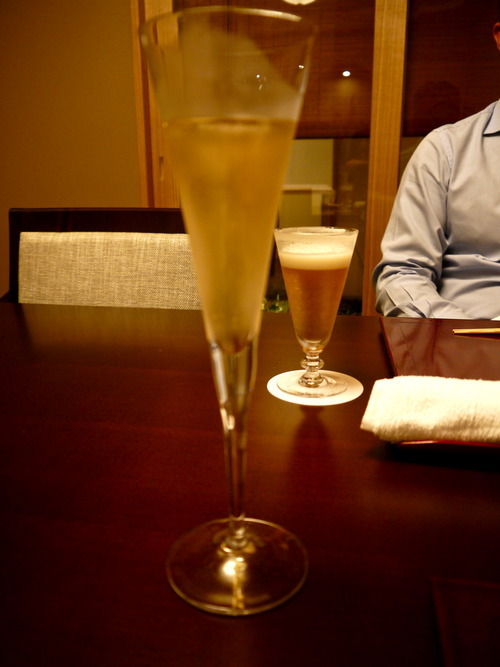
Our first appetizer was a delightfully refreshing dish of uni (sea urchin), kani (snow crab), zuiki (a kind of taro), shiro and a tiny dash of yuzu. The ingredients were stacked on top of one another – the crab unbelievably sweet, and the uni incredibly creamy and clean. Each ingredient played a part in the overall narrative of the dish.
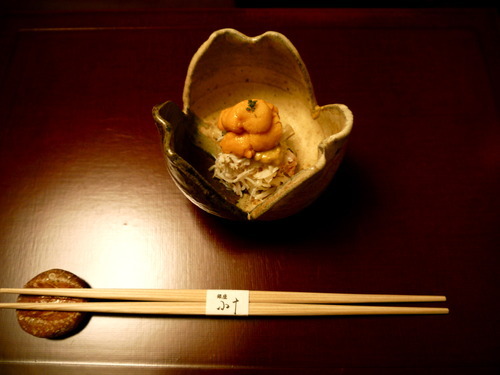
Next came the composition of Matsutake mushroom tempura, which was wonderfully light thanks to the panko layering. The dish was paired with grated sea salt and lime. The entire menu revolves around seasonality, and Matsutake mushroom is highly featured throughout the course of dinner as it is only at its prime during the September to October months. The flavour of the mushroom was full of “umami” and the texture was juicy and meaty.

Following this, our matsutake mushroom journey continued with a clear soup stewed from the essence of the mushroom, along with a fish and shrimp ball crowned with extremely thin slices of myouga Japanese ginger. The soup had layers of depth, veneered with smokiness. The fish and shrimp ball was unlike any I’ve ever tasted before, chunks of bouncy shrimp encased in a creamy, almost eggy fish ball. The ginger was sweet and mellow, and contrasted beautifully with the creaminess of the fish ball as well as the smokiness of the soup.
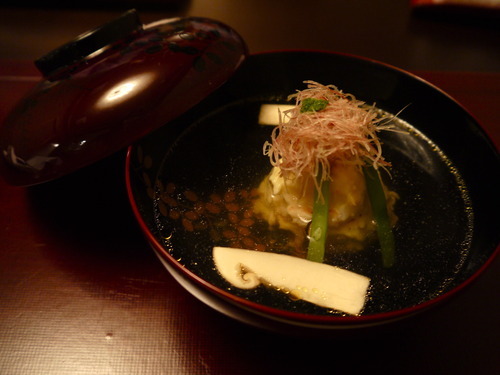
Beautiful mother-of-pearl inlayed bowl
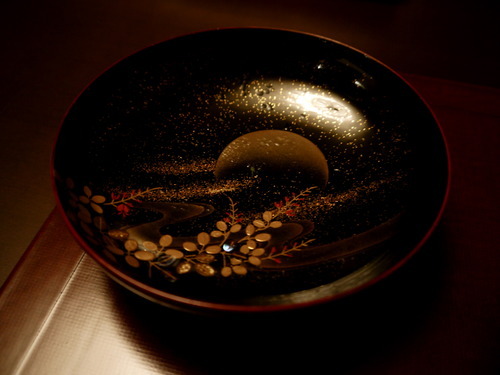
Next came a bouquet of sashimi – 2 kinds of tuna (toro maguro and chu toro), sea bream, and the most amazing ika (cuttlefish) I’ve ever tasted! I usually hate cuttlefish and octopus in my sushi because it is chewy and rubbery, but the texture in the pieces at Kojyu was unbelievable. It was almost gelatinous, very clean, creamy and extremely sweet.
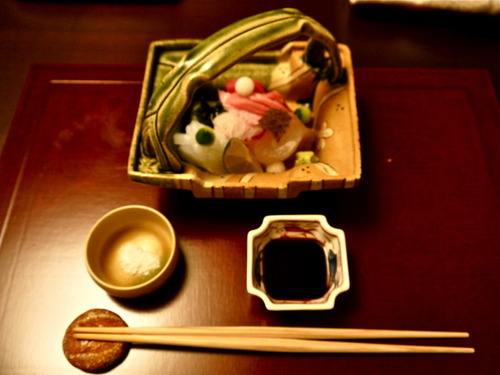
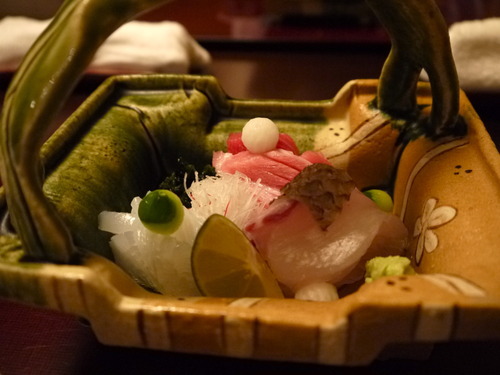
This refreshing dish was followed by a grilled plate of sea bream wrapped around meaty chunks of matsutake mushroom, gingko nuts, daikon slush, flower bulbs of myouga, sweet potato and beautifully marbled wagyu beef. An anchovies crust towered over the sea bream, and the salty little fishes added a delightful crunch. The plate looked like an autumn forest floor full of edible treasures.
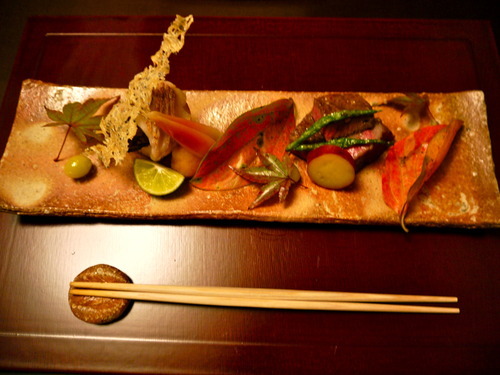
Of course, a Japanese meal is best complimented with some great sake.
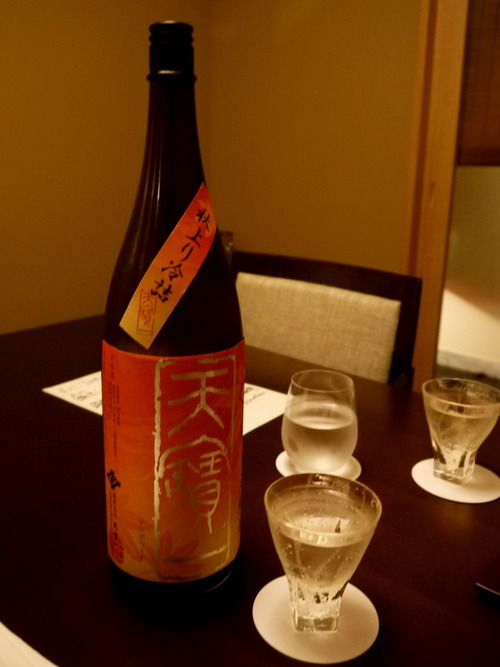
Following this, a bowl of winter melon soup with awabi (abalone) and kimo (abalone liver). The soup was clear yet very gelatinous, and full of umami flavour – the smokiness reminded me of the smell of autumn leaves on a crisp clear day. The winter melon was cut into translucent cubes and steamed. I am not a fan of abalone, but I’ve never see abalone cooked this way – so tenderly stewed that the meat almost falls apart in cloves, giving it incredible texture and flavour. The abalone liver was bitter and inky, contrasting beautifully with the sweetness of the abalone.
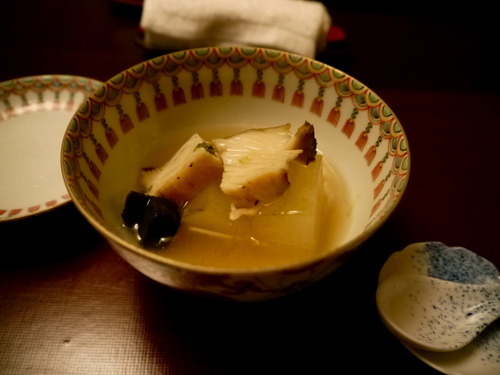
As if we were not satiated already, the next dish was a composition of unagi rice, Japanese pickles and miso soup. Unagi is generally eaten in the summer to replenish stamina during the hot summer months, and this unagi is caught from the clean waters of Iwa lake in Kansai district. The eels are grilled over a charcoal flame and glazed in sugared sake sauce. It has a crisp, smokey crust and soft center, unlike the usual mushy, oily unagi found in most venues.
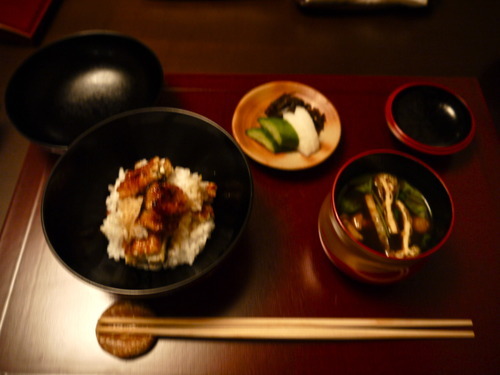
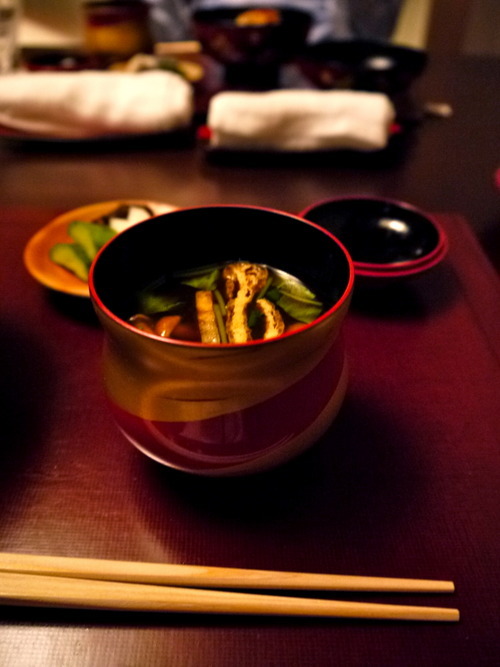
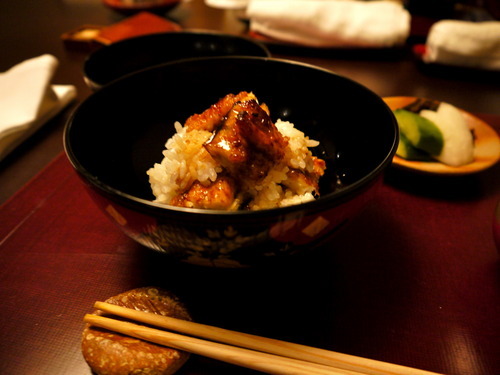
Finally we come to the desserts! Light wine jelly (without a single bubble to smear the perfectly clear surface of the jelly!) with muscat grapes and Japanese pear, garnished with the sharpest mint I’ve tasted thus far. I’ve never had muscat grapes in dessert before, and it almost felt like drinking a nice dessert wine.
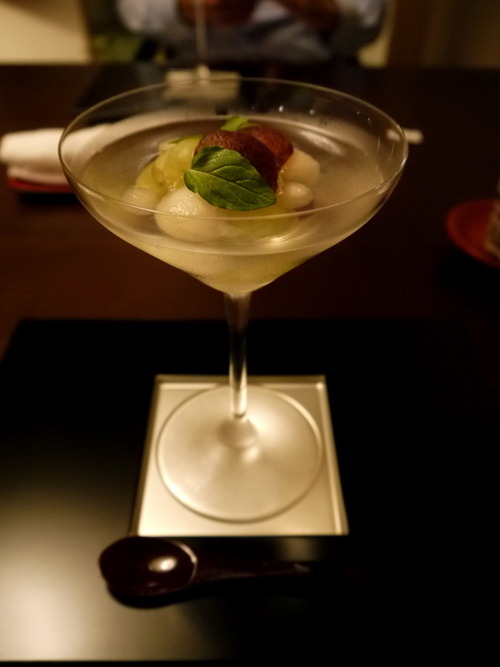
Japanese dessert of warabi mochi (made from a kind of vegetable), layered with brown sugar sauce and kinako soybean powder. This dish strongly reminded me of a classic dessert from my hometown of Beijing, called strangely, “donkey rolling in dust” which uses the same ingredients.
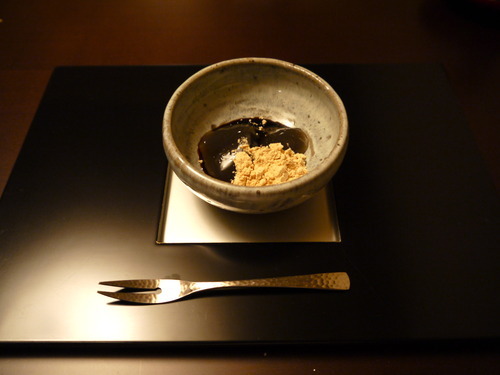
Vibrant green and beautifully frothed green macha.
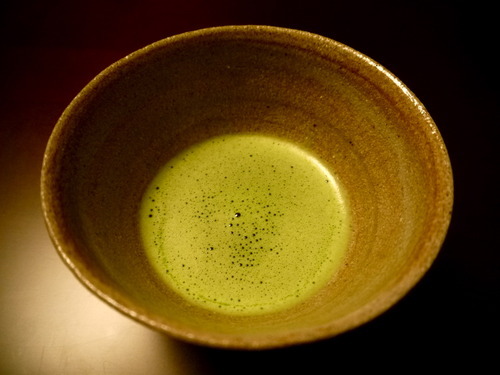
At the end of the meal, we were given a tour of the restaurant and the kitchen. I was so excited to be invited into the kitchen – my place of magic! And I was humbled to shake hands with head chef Okuda-san
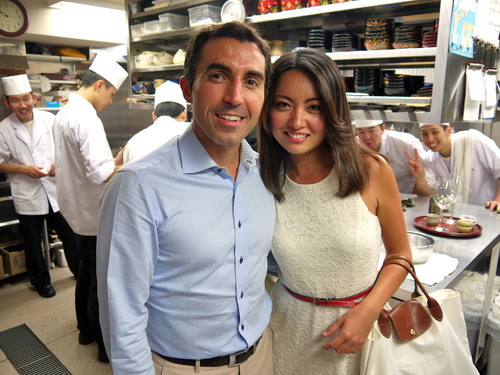
Verdict: Dinner here is not just a meal, it’s a journey. Every dish is meticulously presented, cooked with the best ingredients at their prime. You cannot beat the attention to details and quality, and although it is a multi-course dinner, you leave with a very clean feeling because there is no overpowering grease or sauce used anywhere. This is a restaurant for quiet reflections, not for a rowdy night out. The food is really the best that money can buy.
Kojyu 小十
Address: Karioka Building, 4th Floor, 5-4-8, Ginza
Tel: 03 6215 9544









